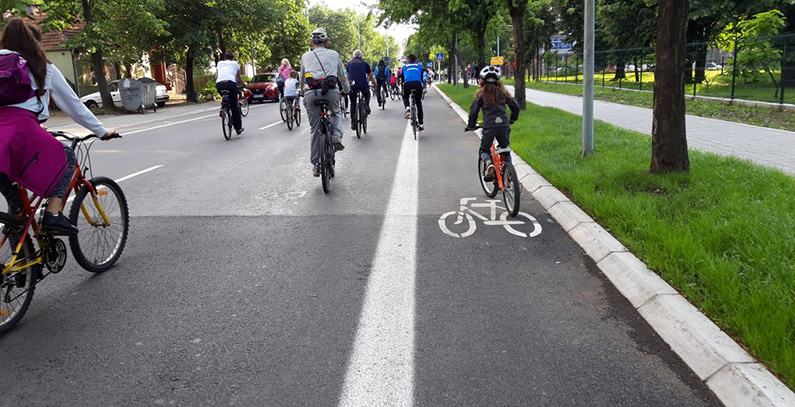
Photo: Krusevac.rs
Rethymno and Karditsa from Greece, Kruševac in Serbia and Turkey’s Ordu are on the list in three out of four categories. The main idea of last year’s action was safe walking and cycling. Kruševac, Rethymno and Wrocław were declared leading big municipalities in European mobility.
Four urban areas in Balkan countries entered the selection of the twelve best local authorities as the European Union prepares to declare the winners of its annual awards for sustainable urban mobility. Serbia’s Kruševac, Rethymno in Greece’s largest island and Polish Wrocław top the chart of big municipalities in the European Mobility Week.
The European Commission’s Directorate General for Mobility and Transport, also known as DG Move, is suporting the campaign politically and financially.
Another Greek city – Karditsa, and Ordu in Turkey are among those in the lead in two other categories. Wrocław was nominated also in the field of sustainable urban mobility planning, together with Brussels and Kaunas.
Pedestrians come first
The highlight last time was safe walking and cycling. Kruševac was commended for its program during last year’s European Mobility Week and the turnout, the public space redisign, removal of parking places and the creation of parks.
Mayor Jasmina Palurović offered a personal example by coming to work on foot and spreading the idea of mobility, according to the statement. The European campaign’s mascot was omnipresent on the ground, it adds.
The city can boast of prioritizing pedestrians during the event, even in the suburbs, as well as of its new bicycle lanes, walkways and squares. Kruševac has been participating regularly and was already in the finals.
Nation’s vanguard in European mobility
It was the first in Serbia when it introduced a sustainable urban mobility plan in 2017. The ambition is to lift the share of sustainable traffic like walking, cycling and the use of public transport to four fifths by 2030.
The city administration is promoting healthy living and the safety of first graders and other groups. It has been addressing noise management and suspending motor vehicle traffic through the main street every day in the summertime.
Civitas recently said Kruševac is the runnerup in its European mobility campaign in three categories: long-term achievements through the participation of the network’s activities, citizen and stakeholder engagement and overall transformation.
Air and renewables, 3D zebra crossings and motivation
Karditsa is in the center of mainland Greece. It is in the group of municipalities with less than 50,000 inhabitants and the remaining two are Alfândega da Fé in Portugal and Estonia’s Paide.
The Greek city impressed the jury with its promotional materials and partnerships. One of its trump cards are the three-dimensional pedestrian crossings. The 2019 week saw schools, government bodies, the police and firefighters and companies join the action. The authorities introduced incentives for firms that roll out sustainable urban mobility development measures.
Rethymno, in Crete’s northern coast, showed how to motivate the population. It focused its communications on air quality, energy from renewable sources and road safety. The jury will take into account the electric bicycles, scooters and buses there and the opening of space for pedestrians, together with the clearly marked zones with a maximum speed of 30 kilometers per hour and the electronic systems for monitoring traffic.
First road safety award
Alongside Ordu and Pontevedra, which is in Spain, another place in Poland – Javorzno – is the contestant for the premier EU Urban Road Safety Award. The Turkish Black Sea city boosted its case by declaring pedestrian zones in its busiest areas. Ordu has also created cycling routes.
The European mobility week is held from September 16 to 22 every year, when local authorities test sustainable transportation alternatives. Last time there were 3,100 participants, the most so far.


















Be the first one to comment on this article.